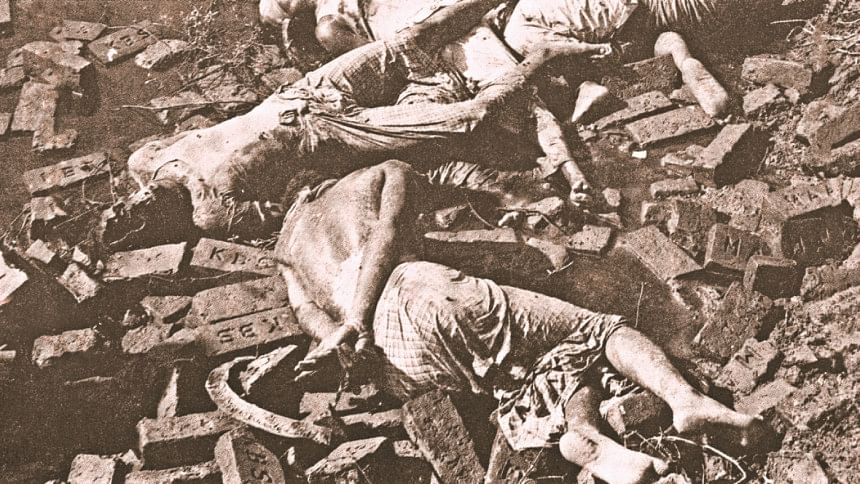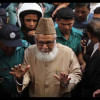Lethal, last bite of losers

It was the final act of brutality against a nation yearning to be free.
The ruthless militia systematically rounded up one by one and tortured and brutally killed the nation's brightest minds.
What it wanted was to execute the evil plot of Pakistan occupation forces to wipe out the Bangalee intelligentsia towards the end of the Liberation War in 1971.
The bodies of many of these pro-liberation people, including professors, journalists, litterateurs and doctors, remained untraced. Some found at different killing fields were barely recognisable.
The cold-blooded savagery left deep scars on the collective psyche of the nation, still struggling to recover from the loss even 45 years after the independence.
The force that spearheaded the massacre was Al-Badr, the notorious killing squad mostly comprised of leaders and activists of Islami Chhatra Sangha, the student wing of Jamaat-e-Islami in 1971.
Every year, the nation observes Martyred Intellectuals Day on December 14 with the victims' family members demanding trial and punishment of the perpetrators.
They might now draw some solace as Jamaat chief Motiur Rahman Nizami, the man who was at the helm of the militia, walked the gallows at 12:10am today. On November 22 last year, another Al-Badr leader, Ali Ahsan Mohammad Mojaheed, was hanged over the same offences.
Nizami was the president of Islami Chhatra Sangha in 1971. During the Liberation War, Chhatra Sangha, as per the war crimes evidence, turned into Al-Badr, an organisation that operated like the Gestapo, Germany's secret police during the WWII.
As the war approached the end, the Pakistan occupation army, realising that it was going to suffer defeat any way, chalked out a plan to cripple the nation intellectually.
And it was Al-Badr that came forward to implement the plan.
Like Gestapo, Al-Badr traced houses of pro-liberation people, especially intellectuals, and dragged them out in December 1971. Often blindfolded, the victims were then taken away only to be tortured and murdered. Their bodies were dumped in mass graves and other places.
Testifying before the international crimes tribunal that tried Nizami, Shyamoli Nasrin Chaudhury, widow of martyred intellectual Alim Chaudhury, said, "Suddenly in the afternoon of December 15, we saw a microbus smeared with mud parked outside the house of Mannan [one of the perpetrators of Alim's abduction]. We went inside. After around 35 minutes, we saw three armed Al-Badr members knocking on our doors."
When Alim asked why they came, they said, "You will know once you come with us. We have got directive from our high command Motiur Rahman Nizami."
The Al-Badr men blindfolded and took him into the vehicle. His body was found beside another martyred intellectual, Dr Fazle Rabbi, at Rayerbazar killing field on December 18, 1971.
Alim Chaudhury was a Language Movement veteran.
After the crackdown on March 25, 1971, many freedom fighters took shelter at his house. He had sent many leaders and freedom fighters to safe places during the nine-month war. Syed Nazrul Islam, who was the acting president of the Bangladesh government in exile, also took shelter at his Purana Paltan house.
During the war, Alim would visit some hospitals and treat injured freedom fighters secretly, said Shyamoli in her testimony.
The intellectuals who had kept alive the spirit of Bangalee nationalism through their write-ups and activities and had helped the freedom fighters were the main targets of Al-Badr.
Journalist Serajuddin Hossain, Syed Najmul Haque, ANM Golam Mostafa, Nizam Uddin Ahmed, Selina Parvin, Shahidullah Kaiser, Dhaka University professors Giasuddin Ahmed, Sirajul Haque Khan, Dr Abul Khayer, Dr Faizul Mohiuddin, Rashidul Hasan, Anwar Pasha, Santosh Chandra Bhattacharyya, Munier Chowdhury and Mofazzal Haidar Choudhury, physicians Mohammad Martuza and Fazle Rabbi were among those who faced similar fate.
Highlighting Nizami's role in Al-Badr Bahini, the Supreme Court in its verdict on January 6 said, "The evidence adduced by the prosecution and the facts and circumstances revealed therefore proved sufficiently that this appellant also had effective control over the members of Al-Badr Bahini.
"We also find that in this case it has been proved beyond all reasonable doubt that accused Motiur Rahman Nizami, being the leader of Al-Badr Bahini, had authority and effective control over the members of this Bahini and he acquiesced all their atrocious activities including the intellectuals killing.”

 For all latest news, follow The Daily Star's Google News channel.
For all latest news, follow The Daily Star's Google News channel. 







Comments